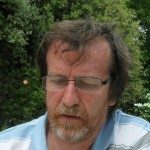Lien vers Pubmed [PMID] – 22533816
Malar. J. 2012;11:128
BACKGROUND: Plasmodium falciparum exports proteins that remodel the erythrocyte membrane. One such protein, called Pf155/RESA (RESA1) contributes to parasite fitness, optimizing parasite survival during febrile episodes. Resa1 gene is a member of a small family comprising three highly related genes. Preliminary evidence led to a search for clues indicating the involvement of RESA2 protein in the pathophysiology of malaria. In the present study, cDNA sequence of resa2 gene was obtained from two different strains. The proportion of P. falciparum isolates having a non-stop T1526C mutation in resa2 gene was evaluated and the association of this genotype with severity of malaria was investigated.
METHODS: Resa2 cDNAs of two different strains (a patient isolate and K1 culture adapted strain) was obtained by RT-PCR and DNA sequencing was performed to confirm its gene structure. The proportion of isolates having a T1526C mutation was evaluated using a PCR-RFLP methodology on groups of severe malaria and uncomplicated patients recruited in 1991-1994 in Senegal and in 2009 in Benin.
RESULTS: A unique ORF with an internal translation stop was found in the patient isolate (Genbank access number : JN183870), while the K1 strain harboured the T1526C mutation (Genbank access number : JN183869) which affects the internal stop codon and restores a full length coding sequence. About 14% of isolates obtained from Senegal and Benin harboured mutant T1526C parasites. Some isolates had both wild and mutant resa alleles. The analysis excluding those mixed isolates showed that the resa2 T1526C mutation was found more frequently in severe malaria cases than in uncomplicated cases (p = 0.008). The association of the presence of the mutant allele and parasitaemia >4% was shown in multivariate analysis (p = 0.03) in the group of Beninese children.
CONCLUSIONS: All T1526C mutant parasites theoretically have the ability to give rise to a full-length RESA2 protein. This study raises the hypothesis that the RESA2 protein could favour high-density infections. Other studies in various geographic settings and probably including more patients are now required to replicate these results and to answer the questions raised by these results.

